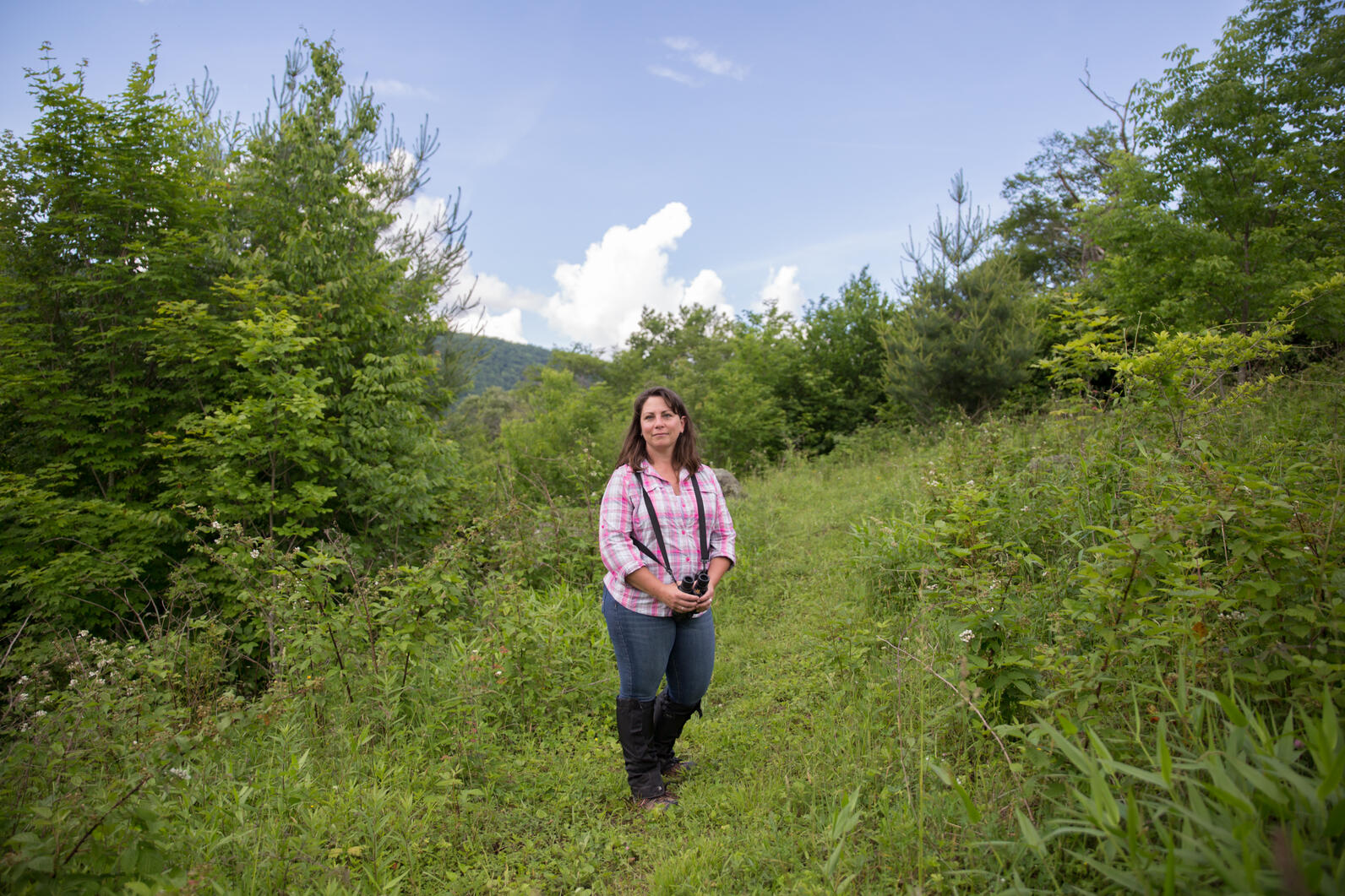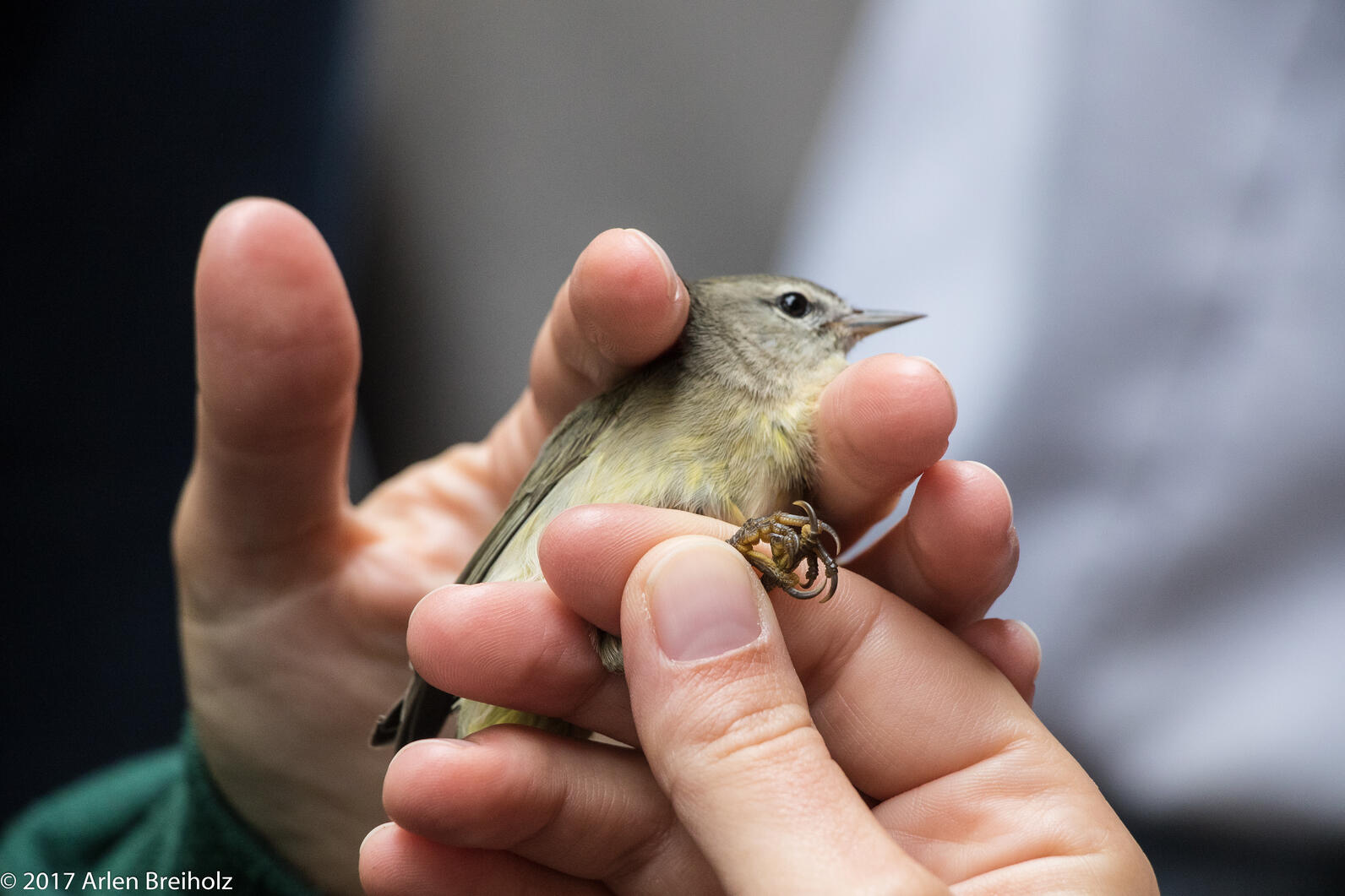Despite its name, the Tennessee Warbler is only a brief visitor to the southeastern United States, when it passes through on its way from Canada to Central America and back again. But these short visits during migration are important.
Tennessee Warblers depend on our forests for shelter and fuel for their journey. During spring migration, these small songbirds use their pointy bills to feast on bugs in the upper canopies of trees, packing on the protein and fat before the frenzy of breeding season begins. On the return trip in the fall, Tennessee Warblers alter their diet and spend more time gorging on ripe berries lower down in the shrubby understory.
“Think of these migrating songbirds as the ultimate foodies,” says Aimee Tomcho, Audubon North Carolina conservation biologist. “They change their menus with the season, based on what’s available locally.”
Part of Tomcho’s job is to make sure these hungry travelers have the food they need. Through Audubon’s bird-friendly forestry program, she partners with landowners to help create diverse forest habitats on their property, to support birds throughout their lifecycle.

Sometimes that means identifying and protecting old growth portions of a forest to ensure there are tall, mature trees that provide cover and insects for food. But it also requires techniques that mimic natural disturbances within a forest. For example, selectively felling trees to create gaps in the canopy can help stimulate the growth of young shrubs and other fruit- and berry-bearing plants in the understory. (For more on how you can help migrating birds at home, check out Audubon's native plants database.)
“A diverse forest is a healthy forest,” Tomcho says. “We often think of this bird-friendly forest management work as being important for nesting species and their babies, which it is, but it’s also absolutely vital for migrating birds, especially long-distance champions like the Tennessee Warbler.”
The Tennessee Warbler is one of the drabber species in a group of otherwise brightly colored, small, and spritely birds known in the Western Hemisphere as warblers. In the U.S. and Canada, many warblers migrate long distances. And many of them, including the Tennessee Warbler, are also at serious risk on their breeding and winter grounds because of climate change and habitat loss. By implementing bird-friendly forestry practices at important migratory stopovers in between, we’re doing what we can to help species right here in North Carolina.
This is especially important in the western part of the state, where Tomcho lives. The mountains serve as a migration superhighway, where birds take advantage of the natural updraft to fly longer distances with less effort. In the spring and fall, warblers and other small songbirds flock to the mountains to take advantage of the air current.
To date, Tomcho’s bird-friendly forestry work has touched nearly 25,000 acres in western North Carolina. The goal is to make sure large numbers of birds like the Tennessee Warbler continue to thrive in the mountains.

As fall migration has heated up, Tomcho has seen big flocks of Tennessee Warblers passing low through the forests near her home in Yancey County. At the local bird banding station, where Tomcho sometimes volunteers, Tennessee Warblers make up a quarter of all birds that are captured and banded.
The bird got its name from ornithologist Alexander Wilson, who collected a specimen just next door in Tennessee in the 1800s. The birds don’t breed or winter in the state, so Wilson’s bird was likely just passing through.
The Tennessee Warbler’s name might not make complete sense given the bird’s range, Tomcho says. But you can also think of it as a reminder of how important stopover habitat is for birds that migrate long distances. “The Tennessee border is just a half hour from my house,” she says. “So now when I hear the name, I remember all of our work and the landowners who help maintain habitat in our mountains and forests for birds.”





